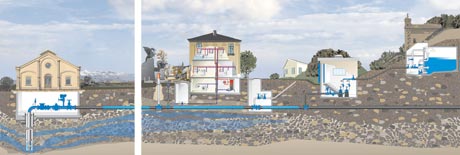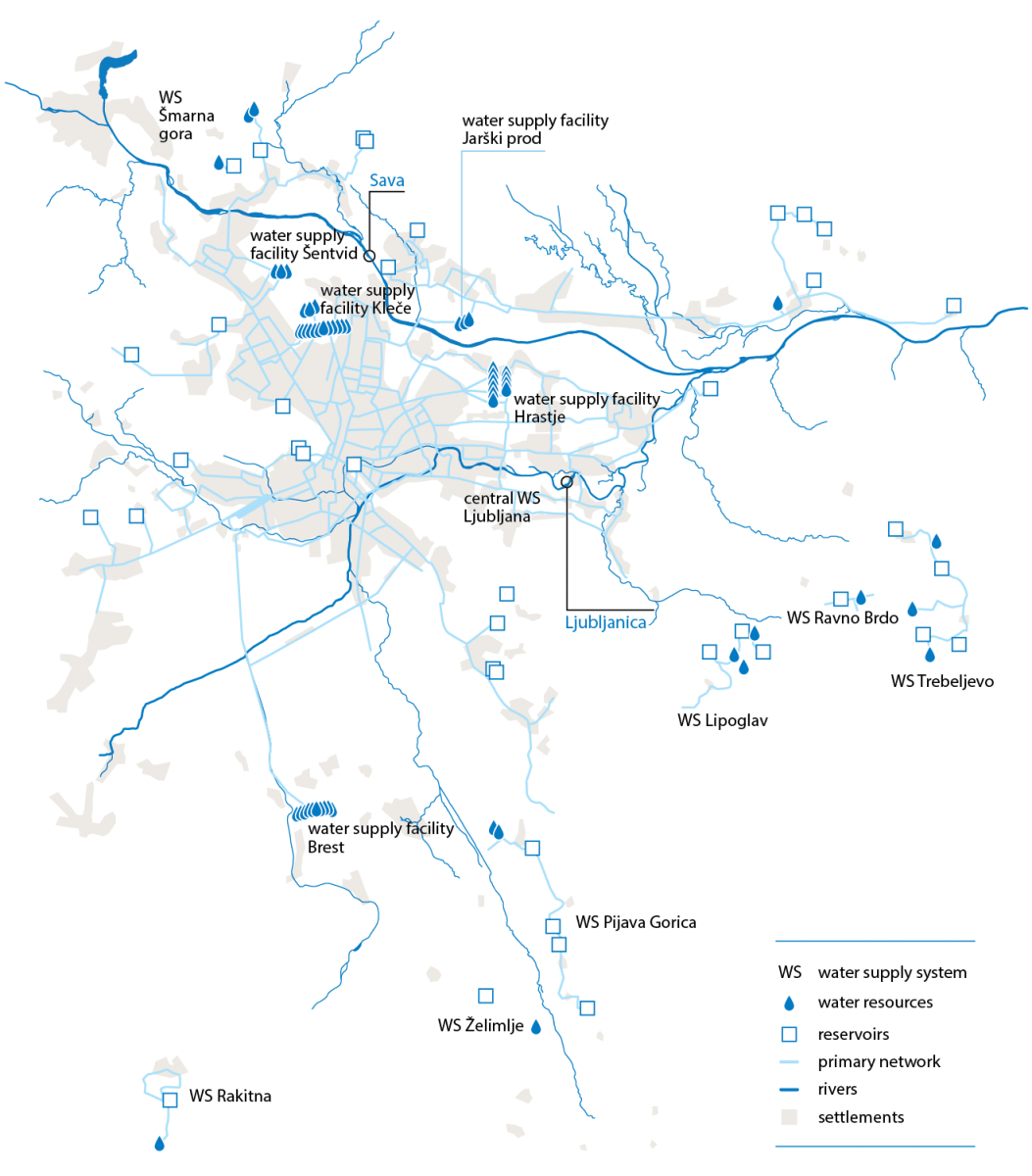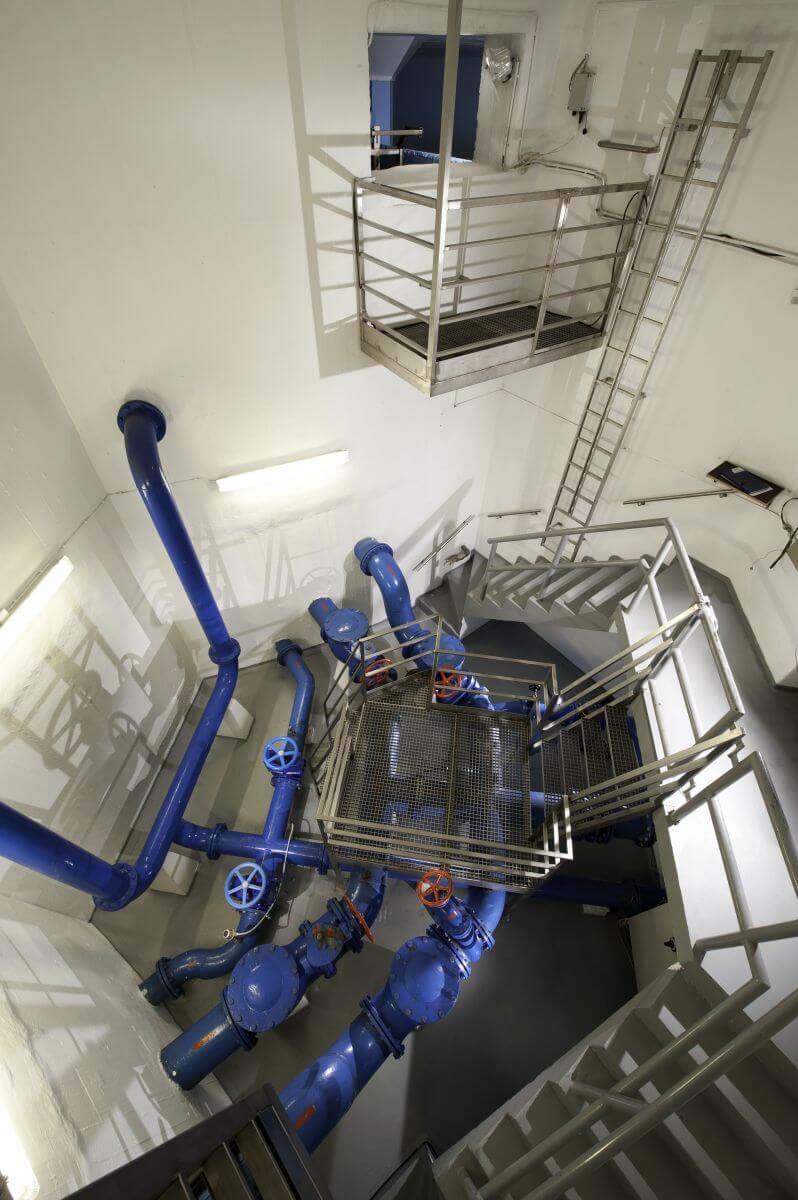Drinking water supply
In the City Municipality of Ljubljana we operate the central drinking water supply system, which also extends beyond the city municipality’s borders, in the area of the municipalities of Brezovica, Dobrova - Polhov Gradec, Dol pri Ljubljani and Škofljica. We also operate the local drinking water supply systems of Lipoglav, Ravno Brdo in Šmarna gora. In the municipality of Brezovica, we operate the local water supply system of Rakitna, while in the municipality of Škofljica we operate the local water supply systems of Orle, Pijava Gorica and Želimlje.
Drinking water is our natural resource and an invaluable and irreplaceable good. It is also our faithful companion since we use it daily for drinking, preparing food and in various activities at home and in industry. Each inhabitant of Ljubljana and its surroundings uses 115-150 litres of drinking water per day. Taking industrial and other uses into account, per capita consumption is around 200 litres.

The central water supply system and eight local water supply systems comprise, in addition to five water supply facilities with 44 wells, ten minor local pumping stations and 1,100 kilometres of the water supply network, supplying 330,000 users through 42,000 connections.

The water source of the central drinking water supply system is the groundwater of the sand and gravel aquifers of Ljubljansko polje and Ljubljansko barje, where groundwater is pumped in five water supply facilities: Kleče, Hrastje, Jarški prod, Šentvid and Brest. The local water supply systems are supplied from their own local water sources, where the water source is groundwater captured in the form of springs or wells, or surface water.
In the central system, some settlements are continuously supplied with drinking water from a single water supply facility, and others from two or more water supply facilities, depending on water consumption and pressure conditions in the system.
Water supply facilities and catchments are strictly protected areas, surrounded by a protective fence, marked with a warning sign and under the constant supervision of a security service. Direct access to the pumping stations is only possible in the company of an authorised person. The staff are only constantly present in the Kleče water supply facility.
Water pipelines of large diameters run from water supply facilities and catchments, forming the primary water supply network together with the facilities in the system such as reservoirs and re-pumping stations. Water pipelines of smaller diameters lead from the primary water supply networks towards the users. They are connected in a dense network of the secondary water supply network. The diameters of the pipelines are between 50 and 800 millimetres.
In Ljubljana, drinking water runs via the water supply network to users from the natural environment, without any technical water preparation procedures, and is only chlorinated occasionally. Water is prepared in a local water supply system. On its way from the pumping stations to the users, it is not kept in the network for more than a few hours. Water is unable to run to more elevated areas, such as the castle hill, without additional devices due to insufficient pressure in the water supply network. Therefore, a re-pumping station or a hydro station is included in the water supply network.
Eleven re-pumping stations pump water into reservoirs. Via control mechanisms, their operation is connected with the level of water in the reservoirs, from which water travels to users. A hydro station is a device which establishes adequate and stable pressure conditions in the downstream water supply network, depending on the requirements of buildings in more elevated areas. Twenty hydro stations are installed in the systems. An opposite role of that of re-pumping stations is played by pressure regulators, decreasing the pressure conditions to levels acceptable for users in certain sections of the drinking water supply network.

Reservoirs are reinforced-concrete partially-underground buildings with one or two water cells. Water is delivered directly to the reservoirs or via re-pumping stations. When water consumption in the water supply system is lower, such as during the night, any excess pumped water is pumped into them. When water consumption is higher, water from the reservoirs also flows into the water supply network in addition to the water pumped from the water supply facilities. With their spare capacities, reservoirs enable a stabler and safer supply of drinking water. Upon a sudden discontinuation of water pumping, only water from the reservoirs can be used temporarily to cover the requirements in the network. The nineteen reservoirs of the Ljubljana water supply system have a total volume of 21,000 m3, while 12 reservoirs with a volume of 2,500 m3 operate in the local water supply systems. The surroundings of Ljubljana are hilly; therefore, the reservoirs are on slopes surrounding the town. Unlike towns on flatlands, Ljubljana does not know so-called water towers that are used to create sufficient pressure in the network.
Over 9,600 hydrants are installed in the water supply network. These are points in the water supply network where access to water is possible in the case of a fire. An almost inestimable number of other fittings are found in the water supply network: gate valves, butterfly valves, ventilators, mud guards. Inspections of the water supply network are conducted visually and with audiometers installed in individual sections of the network. With the equipment for the automated measurement of flows and pressures in the network, we obtain data for analyses intended for optimising the system’s operation, preventive interventions, such as the replacement of damaged parts, and the preparation of rehabilitation programmes.
The network of the Ljubljana water supply systems includes pipes made of steel, cast iron, polyethylene and polyvinyl chloride, spheroidal-graphite cast iron and asbestos cement. The oldest waterworks are over 120 years old. Spheroidal-graphite cast iron is most commonly used in the renovation of the water supply network, while polyethylene is most frequently used for household connections.
The functioning of the water supply system is managed and supervised in the control centre. All data on the functioning of individual facilities are transmitted there. Those intended for the pumping, re-pumping and storage of water are automated and controlled by a remote system. Based on input data, controllers independently manage pumping processes and transfer data to the control centre. The data transfer between the facilities and the control centre takes place via a radio station. The software is regularly upgraded according to modern development trends around the world.
In buildings connected to the public water supply network, drinking water consumption is measures by water gauges. Before being installed, each water gauge is tested in our own laboratory for controlling water gauges, accredited according to the requirements of the standard SIST EN ISO/IEC 17020. In order for the water consumption measurements to be reliable and accurate, the installed water gauges are replaced every five years, with large ones being replaced every three years. We are also preparing a project for the remote reading of consumption and automated data transfer to the databases.

